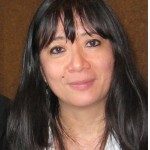Link to Pubmed [PMID] – 33463828
Link to DOI – 10.1111/mec.15590
Mol Ecol 2020 10; 29(19): 3593-3606
Aedes aegypti is among the best-studied mosquitoes due to its critical role as a vector of human pathogens and ease of laboratory rearing. Until now, this species was thought to have originated in continental Africa, and subsequently colonized much of the world following the establishment of global trade routes. However, populations of this mosquito on the islands in the southwestern Indian Ocean (SWIO), where the species occurs with its nearest relatives referred to as the Aegypti Group, have received little study. We re-evaluated the evolutionary history of Ae. aegypti and these relatives, using three data sets: nucleotide sequence data, 18,489 SNPs and 12 microsatellites. We found that: (a) the Aegypti Group diverged 16 MYA (95% HPD: 7-28 MYA) from its nearest African/Asian ancestor; (b) SWIO populations of Ae. aegypti are basal to continental African populations; (c) after diverging 7 MYA (95% HPD: 4-15 MYA) from its nearest formally described relative (Ae. mascarensis), Ae. aegypti moved to continental Africa less than 85,000 years ago, where it recently (<1,000 years ago) split into two recognized subspecies Ae. aegypti formosus and a human commensal, Ae. aegypti aegypti; (d) the Madagascar samples form a clade more distant from all other Ae. aegypti than the named species Ae. mascarensis, implying that Madagascar may harbour a new cryptic species; and (e) there is evidence of introgression between Ae. mascarensis and Ae. aegypti on Réunion, and between the two subspecies elsewhere in the SWIO, a likely consequence of recent introductions of domestic Ae. aegypti aegypti from Asia.

